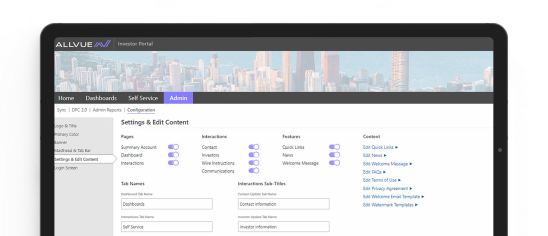
By: Megann Freston
Director of Product Marketing
March 12, 2024
Distressed debt is the type of debt carried by an organization in which they have too much debt to refinance or they’re unable to meet the requirements of existing debt agreements—or the company is headed toward one of these situations. For third parties, investing in an organization’s distressed debt can be lucrative because of the opportunity to buy the debt at significant discounts and, later, reap gains from selling the previously distressed assets at a much higher value.
Although it offers high rewards, distressed investing can be risky, meaning investors must fully understand its nuances. So, how exactly does distressed debt investing work?
Introduction to distressed debt investing
When investing in distressed assets, investors identify companies that cannot pay off their debts because their existing capital structure cannot support the payments. For a distressed debt investor, these assets provide an opportunity for value creation. In many instances, a company’s assets may hold significant long-term value, but the company in question has a messy balance sheet.
If a distressed debt investor purchases enough debt to own a controlling stake in the distressed company, the investor can restructure the organization, add value to the assets, and sell them off later. Alternatively, an investor could purchase a company’s distressed debt and wait for a payout if the company files for bankruptcy following a failed attempt at restructuring.
However, these opportunities can complicate the relationships between investors, existing shareholders, and the company’s management because of the uncertainty surrounding the future of the distressed company.
On one hand, distressed debt investors may focus on investing their capital into a company’s debt, hoping to gain from either a bankruptcy payout or future buyout following restructuring. But there’s no guarantee of either outcome since it largely depends on whichever investor has a controlling stake in the company.
Characteristics of distressed debt
In general, distressed assets sell at much lower prices than regular debt instruments because of their risk ratings, typically “CCC” or below by debt-rating agencies.
When comparing traditional and alternative debt investments, one could find there’s a significant margin of return with the alternatives. On a distressed debt asset, an investor can easily anticipate a rate of return 1,000 basis points above traditionally lower-risk assets, such as treasury bills or bonds, which makes them lucrative opportunities.
Furthermore, companies with distressed debt are often on the path to filing for Chapter 11 or Chapter 7 bankruptcy, meaning they are considered high-risk. With a Chapter 11 bankruptcy filing, there is hope for company restructuring, which could significantly increase the value of assets for investors to yield large returns. However, after filing for Chapter 7 bankruptcy, a company halts operations and becomes liquidated, issuing funds to creditors.
Opportunities in distressed debt investing
What are the common opportunities for investors to inject capital into distressed debts?
Bonds and mutual funds
Bond markets provide an attractive opportunity for large investors like hedge funds and private equity firms to find large debt supplies at discounted prices. These investors can also purchase bulk distressed debt assets directly from mutual funds without worrying about the impact of these transactions on financial markets and the commissions associated with completing these transactions on an exchange platform.
There’s also a great opportunity for distressed debt investors to purchase high-yield bonds that may be undervalued to hold them for short periods before selling them off at much higher profits. These types of investments also act as safer bets for companies with limited investing capital to work with.
Distressed companies in profitable sectors
Although experts advise sector-agnostic distressed investing, some industries tend to be more profitable than others in the long term. For instance, investing in a healthcare or real-estate company with distressed debt assets may be promising when it comes to balancing out risk vs reward.
With increasing potential for growth in either industry, chances are an investor can restructure companies in these sectors, add value to them, and sell them off or put them up for an IPO. As the market evolves, investing firms can also rely on business intelligence tools to minimize the risks of investing in volatile industry markets.
Risks and rewards
There’s an interesting balance between risk and reward in distressed investing.
It’s more beneficial for investors to own the debt carried by a distressed company than to have equity in that company if it’s on the path to bankruptcy. Should that company eventually file for bankruptcy, the outstanding debts must be paid off first before the equity held in that company. However, if the company does perform well, investors that own equity stand to yield significant long-term returns.
Investing in distressed debt to own a company can be highly rewarding if it’s in a sector poised for continuous growth, such as real estate or healthcare. With the right expertise, the investor can restructure the company, increase the value of its assets, and transform the capital structure to raise its equity-to-debt ratio.
However, distressed investing carries significant risk when it comes to competing with other investors, who may have started investing much earlier and are now on the path to owning majority equity if the company at hand files for bankruptcy. It’s also challenging to find sufficient information to guide distressed investment decisions outside of that which is publicly available. Going into a distressed investment deal blindly could then pose risks to one’s capital.
The process of distressed debt investing
As with other types of alternative investments, distressed investing must take on a methodical approach to be successful and yield returns for the investor. Let’s explore two fundamental steps investors can take when placing their capital into debt assets:
Research and due diligence
The initial stages of researching distressed debt opportunities and conducting due diligence are critical to the success of the overall investment strategy.
Since distressed debt is much different from traditional debt, investors must ask the right questions before deciding on an investment strategy. For instance, it helps to understand how the company got to the point of financial distress and whether its capital structure can be improved.
Beyond understanding the potential for recovery from distress, investors should project potential gains they can derive from restructuring and adding value to the company’s assets. If it’s more likely that the company will file for bankruptcy, investors should ideally have that information available before deciding to invest.
Risk management
Each step of distressed debt investing carries some form of risk, meaning investors should be aware of these risks as they inject capital into debt assets. For example, an understanding of bankruptcy law can help guide risky investments into companies at risk of filing for either Chapter 7 or Chapter 11 bankruptcies.
Likewise, it’s important to know when to pull out capital from an investment that may not be suitable for an investor’s needs. For instance, an understanding of the risk profiles of promising distressed debt opportunities can help investors choose between those that best fit their risk tolerance and available capital, mitigating the risk of tying up capital in an unfruitful investment.
Key players in the distressed debt market
The major players in the distressed debt market are hedge funds and private equity firms, which typically have large amounts of capital to invest in distressed companies. Considering the risk associated with these investments, investors must have adequate resourcing to conduct research and due diligence and evaluate an asset’s risk profile before investing capital.
The role of technology in distressed debt analysis
Technology plays a major role in streamlining distressed debt investments because it provides investors with the information they need to make timely, accurate decisions about which assets to invest in.
On the investment sourcing and execution side, technology helps investors research and profile the risk of investing in distressed debts but also helps firms prioritize compliance at each stage of investment. Once a pipeline is established, it’s much easier for private equity firms, hedge funds, or other players in the distressed debt market to keep track of opportunities and investors that will help grow their portfolios.
When it comes to managing distressed debt investments, it helps to have a set of tech-driven tools to manage portfolios, monitor fund performance, and make insightful decisions based on business intelligence. Even with the right expertise and resourcing, it can be cumbersome to handle all these tasks manually, hence the need for tool-based automation.
Optimized distressed debt investment with Allvue
With the right tools, distressed debt investors can make speedy, thought-out investments in companies currently undergoing financial distress. Although these types of capital investments are risky, there’s still potential for gains when acting on data-based insights. And that’s what Allvue provides.
Allvue’s alternative investment solutions help investors differentiate themselves from competitors in the industry by providing adaptable tools to streamline every aspect of distressed debt investing. Whether you’re looking to improve your back office systems, effectively manage investment portfolios, source debt assets quickly, or raise capital, our solutions can help you meet diverse investment needs.
Contact us to learn more about how these solutions can help you.
Sources:
CFA Institute. Distressed Debt: Which Sectors Offer Value? https://blogs.cfainstitute.org/investor/2023/06/28/distressed-debt-which-sectors-offer-value/
Harvard Business School. What is Distressed Debt Investing? https://online.hbs.edu/blog/post/distressed-debt-investing
Investopedia. Distressed Securities: Meaning, Overview and Examples. https://www.investopedia.com/terms/d/distressedsecurities.asp
Investopedia. Why Hedge Funds Love Investing in Distressed Debt. https://www.investopedia.com/articles/bonds/08/distressed-debt-hedge-fund.asp
More About The Author

Megann Freston
Director of Product Marketing


